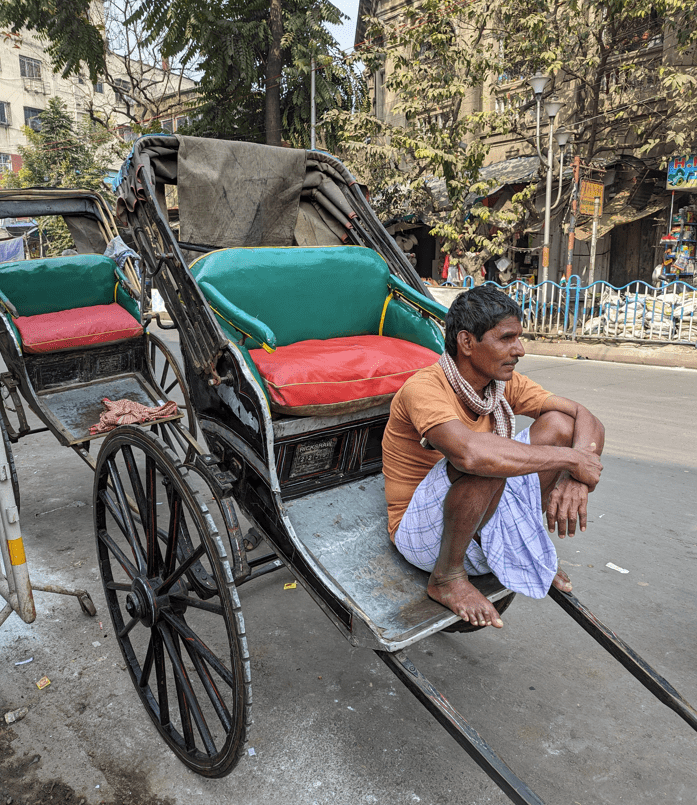Hand-pulled rickshaws, also known as coolie rickshaws, are iconic two-wheeled vehicles that have traversed the streets of Kolkata for over a century. These human-powered taxis, piloted by “rickshaw pullers,” offer a unique and historic mode of transportation, particularly in the narrow lanes of the city’s old quarters.
Their history in India dates back to the British Raj, when they were introduced as a cheap and efficient form of transport. However, their numbers have dwindled in recent decades, with Kolkata being one of the few cities where they are still a common sight.
The job of a rickshaw puller is physically demanding and often poorly paid. Many come from marginalized communities and see it as a last resort for earning a living. Despite the challenges, there’s a certain romance associated with the profession, often depicted in films and literature.
While they contribute to Kolkata’s unique character, their presence also sparks debate. Some argue that they contribute to traffic congestion, while others highlight the ethical concerns surrounding their working conditions. The future of hand-pulled rickshaws in Kolkata remains uncertain, caught between tradition, economic reality, and the growing cityscape.
On my recent trip to India, while in Kolkata, being a cyclist, I wanted to drive a pedal-rickshaw again; I have before on one occasion. Surprisingly, I found there are only a few pedal-rickshaws in Kolkata left. Virtually all rickshaws are now auto-rickshaws, the motorized version of the hand-pulled rickshaws or cycle-rickshaws. With the alarming traffic in India’s big cities, it’s not so surprising that the human-powered versions of rickshaws are on their way out. But you can certainly buy an electric trike with pedal power on Amazon! 
